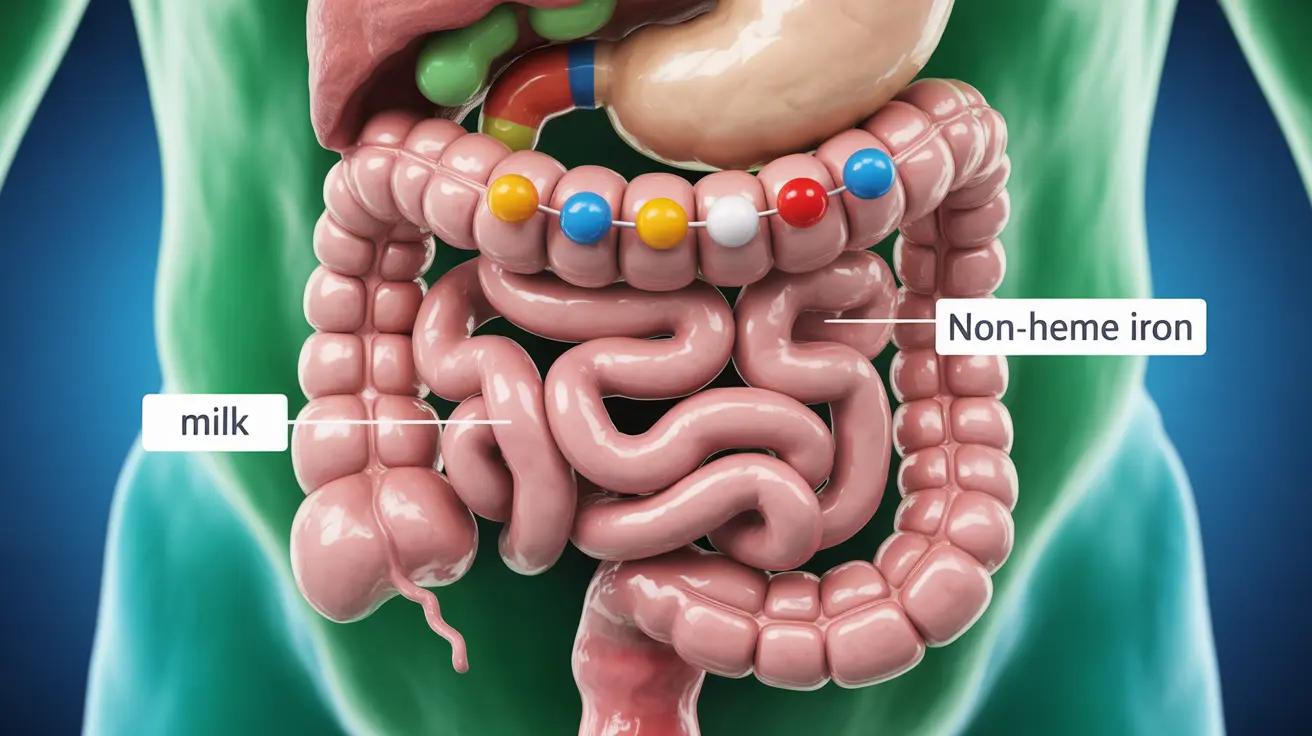Many adults enjoy milk as part of their daily diet, appreciating its calcium content and nutritional benefits. However, questions have emerged about whether excessive milk consumption might contribute to iron deficiency anemia, particularly in vulnerable populations. Understanding this relationship is crucial for maintaining optimal health and preventing nutritional imbalances.
Iron deficiency anemia affects millions of people worldwide and can significantly impact energy levels, cognitive function, and overall quality of life. While milk offers numerous nutritional benefits, its interaction with iron absorption deserves careful consideration, especially for those at risk of iron deficiency.
Understanding Iron Deficiency Anemia
Iron deficiency anemia occurs when the body lacks sufficient iron to produce healthy red blood cells. This condition develops gradually, often starting with depleted iron stores before progressing to reduced red blood cell production. Adults experiencing this condition may notice fatigue, weakness, pale skin, and difficulty concentrating.
Several factors contribute to iron deficiency in adults, including inadequate dietary intake, poor absorption, blood loss, and certain medical conditions. Understanding these risk factors helps identify individuals who may be more susceptible to developing anemia when consuming large amounts of milk.
The Milk and Iron Connection
Research indicates that excessive milk consumption can potentially interfere with iron absorption and contribute to iron deficiency in adults. This occurs through several mechanisms that affect how the body processes and utilizes iron from dietary sources.
Calcium's Role in Iron Absorption
Milk contains high levels of calcium, which can inhibit iron absorption when consumed simultaneously with iron-rich foods. Studies show that calcium competes with iron for absorption in the intestinal tract, particularly affecting non-heme iron found in plant-based foods. This competitive relationship means that timing milk consumption appropriately becomes important for maintaining adequate iron levels.
Displacement of Iron-Rich Foods
Adults who consume excessive amounts of milk may inadvertently reduce their intake of iron-rich foods. When milk becomes a primary source of calories and nutrients, it can displace other nutritious foods like lean meats, legumes, and leafy greens that provide essential iron. This dietary displacement can gradually lead to insufficient iron intake over time.
Risk Factors and Vulnerable Populations
Certain adults face higher risks of developing iron deficiency when consuming large quantities of milk. These include individuals with existing iron deficiency, those following restrictive diets, and people with gastrointestinal conditions that affect nutrient absorption.
Women of childbearing age represent a particularly vulnerable group due to increased iron needs from menstruation. Additionally, adults following vegetarian or vegan diets who rely heavily on plant-based milk alternatives may need to pay special attention to iron absorption and timing of calcium-rich beverage consumption.
Prevention Strategies and Healthy Consumption
Preventing iron deficiency while enjoying milk requires strategic dietary planning and awareness of nutrient interactions. Adults can maintain healthy iron levels by implementing several practical approaches to their daily nutrition routine.
Timing Considerations
Consuming milk and iron-rich foods at different times can help optimize iron absorption. Experts recommend waiting at least two hours between consuming calcium-rich beverages like milk and iron-rich meals. This separation allows for better absorption of both nutrients without significant interference.
Enhancing Iron Absorption
Pairing iron-rich foods with vitamin C sources can significantly improve iron absorption, even when consuming milk regularly. Foods like citrus fruits, bell peppers, strawberries, and tomatoes contain vitamin C that enhances iron uptake. Including these foods with iron-rich meals helps counteract potential absorption interference from calcium.
Balanced Nutrition Approach
The key to preventing iron deficiency while consuming milk lies in maintaining a balanced, varied diet. Adults should focus on including diverse iron sources throughout the day, such as lean meats, poultry, fish, beans, lentils, and fortified cereals. This variety ensures adequate iron intake regardless of milk consumption patterns.
Monitoring overall dietary patterns and being mindful of nutrient interactions helps adults maintain optimal iron status. Regular health check-ups that include iron level testing can help identify potential deficiencies before they become problematic.
Frequently Asked Questions
Can drinking too much milk cause iron deficiency anemia in adults?
Yes, excessive milk consumption can contribute to iron deficiency anemia in adults through multiple mechanisms. The high calcium content in milk can interfere with iron absorption, particularly non-heme iron from plant sources. Additionally, when milk displaces iron-rich foods in the diet, it can lead to inadequate iron intake over time. Adults who consume more than 3-4 cups of milk daily may be at increased risk, especially if they have existing iron deficiency risk factors.
How much cow's milk per day is safe for children without increasing iron deficiency risk?
For children, health experts recommend limiting cow's milk to 16-24 ounces (2-3 cups) per day for toddlers aged 1-2 years, and up to 24 ounces (3 cups) for children aged 2-5 years. This amount provides beneficial nutrients like calcium and vitamin D while minimizing the risk of iron deficiency. Exceeding these recommendations can lead to milk displacing iron-rich foods and interfering with iron absorption from other dietary sources.
What are the signs and symptoms of iron deficiency anemia in young children?
Young children with iron deficiency anemia may exhibit fatigue, irritability, pale skin (especially around the eyes and nail beds), decreased appetite, and slower growth or development. Some children may crave non-food items like ice, starch, or dirt (a condition called pica). They might also experience difficulty concentrating, frequent infections due to weakened immunity, and restless leg syndrome. Behavioral changes, including increased fussiness or difficulty with attention, are also common early indicators.
Does milk interfere with iron absorption from food and supplements, and how can I prevent this?
Yes, milk can interfere with iron absorption due to its high calcium content, which competes with iron for absorption in the intestinal tract. To prevent this interference, avoid consuming milk or calcium-rich dairy products within 2 hours of iron-rich meals or iron supplements. Instead, pair iron-rich foods with vitamin C sources like citrus fruits, bell peppers, or strawberries to enhance absorption. Taking iron supplements on an empty stomach or with vitamin C-rich beverages (avoiding milk) maximizes absorption.
What iron-rich foods should children eat to prevent anemia if they drink milk regularly?
Children who consume milk regularly should include various iron-rich foods throughout the day. Excellent sources include lean red meat, poultry, fish, eggs, and iron-fortified cereals. Plant-based options include beans, lentils, tofu, spinach, and quinoa. Pairing these foods with vitamin C sources like oranges, strawberries, bell peppers, or tomatoes enhances iron absorption. Avoid serving these iron-rich foods directly with milk; instead, offer them at separate meal times or snacks to optimize iron uptake while maintaining the nutritional benefits of milk consumption.




